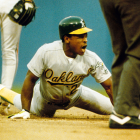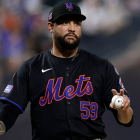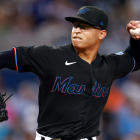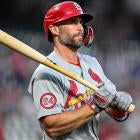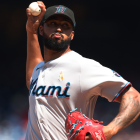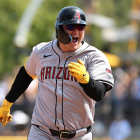Man, what a day. Major League Baseball's non-waiver trade deadline was at 4 p.m. ET on Monday and there were a ton of trades that came to fruition in the final 24 hours. Here are my subjective winners and losers of the free trade period for 2017.
Now, we're gonna dive in on the "non-waiver" wording above, because July 31 isn't a hard deadline. Trades can still be completed, it's just a lot more complicated and many players would never be traded in August. The logistics just wouldn't work out.
For any player that might be traded this month, let's walk through the process.
To make things easier to understand, we need a player to use as our example here. The vehicle, if you will. We'll go with Padres starter Jhoulys Chacin. He's 10-7 with a 4.22 ERA and 1.29 WHIP this season. Teams aren't gonna be falling over themselves in order to acquire him, but if a contender sees a short-term strong need for starting pitching depth, a minor deal might be worked out. Basically, he's the ideal August trade candidate.
Here's how a deal would work:
- The Padres would place Chacin on waivers.
- If more than one team puts in a claim on Chacin, the one with the worse (or worst, in the cases of more than two teams vying for Chacin) record in the NL wins the claim. If no NL team claims him, the same process goes for the AL teams (and, obviously, vice-versa if the player is placed on waivers by an AL team). Playoff tiebreakers are used if teams tied in the standings place claims.
- If a claim is awarded, the Padres have three options. The first is the easiest and happens most often: They can pull Chacin back and just keep him. The reason this happens a lot is most teams try to get as many players as possible through waivers so they still have the option to trade him to anyone (more on that in the next bullet-point). If the player doesn't get through and they wish to keep him, teams just pull him back and he won't be traded this season. The second option here is to trade Chacin to the claiming team. It happens, it's just that neither team has a lot of leverage in this case. The third option is to simply let the player go to the team that claimed him. This doesn't really happen with players who aren't saddled with large contracts, but it's possible that this would happen with someone who is. We'll get to that.
- If Chacin clears waivers, he can then be traded to anyone for the rest of the season. This is why teams like to get as many players through waivers as possible. Just so the options are on the table, even if they have no intention of trading said players.
- Once players have been through waivers, the trades then become more "normal" -- among players who have been through waivers and those not on 40-man rosters, of course. All no-trade clauses apply and money can change hands. Same ol' trades.
- Trades can still happen in this manner in September, but any player acquired during September isn't eligible for the playoffs. As such, Aug. 31 is another deadline.
- The waivers discussed above are called revocable waivers and that can only happen once per player. A player getting put on waivers a second time is now on irrevocable waivers and if he's claimed, he's gone and his original team can do nothing to stop it. Obviously, this means any player with value doesn't get put on irrevocable waivers, for the most part.
Next up, I mentioned "we'll get to that" on players with big contracts because there's one guy I want to discuss this season: Justin Verlander.
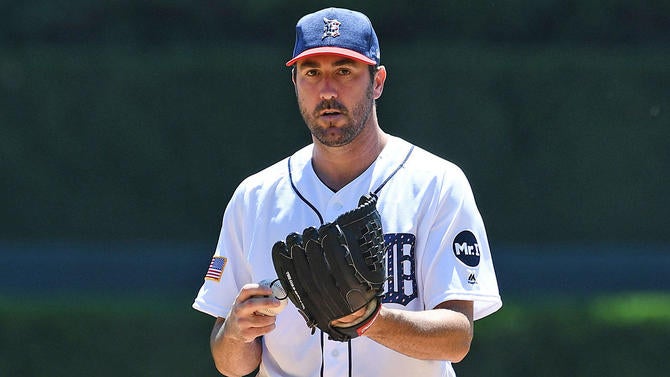
The Tigers ended up holding Verlander in front of the non-waiver deadline, but he could still go in August, in my opinion.
First off, Verlander could well get through waivers. He's 34 years old and due $28 million in each of the next two seasons with almost 2,500 innings of regular-season mileage on that right arm. Remember, if a team puts in a claim on Verlander, the Tigers have the option to just let him go and that team would be stuck with the remainder of his contract.
It's a gamble. Perhaps a few large market teams would be willing to risk it? Maybe? He was stellar last season, particularly in the second half and has a 2.25 ERA in his last five starts right now.
I really think Verlander gets through waivers, though, which means the Tigers could revisit trading him if they so choose. At the very least, Verlander is a fun discussion point here.
Those who made it this far now know the basics on how trades can still happen after the "trade deadline." That's cool. The more you know, right?









